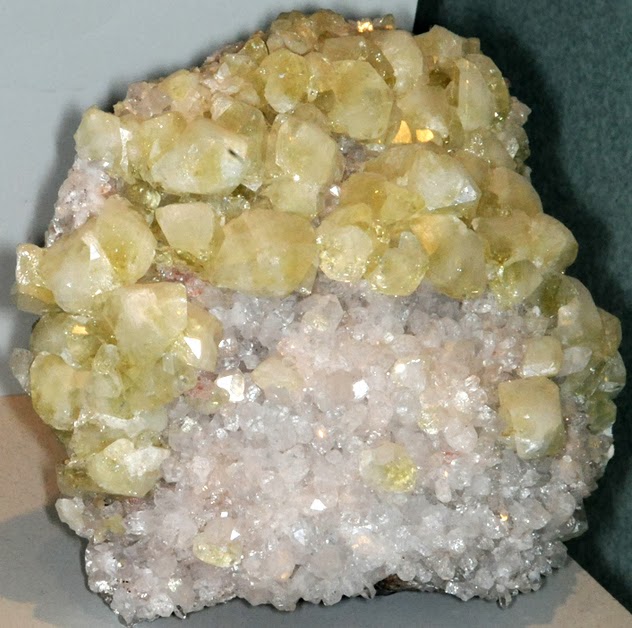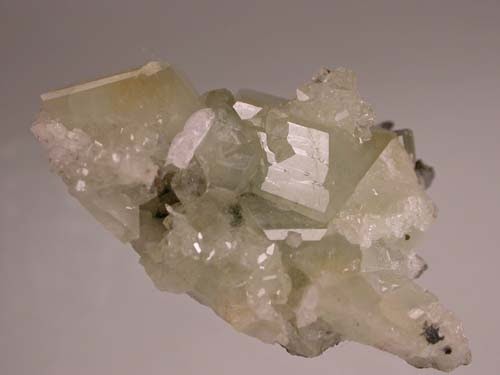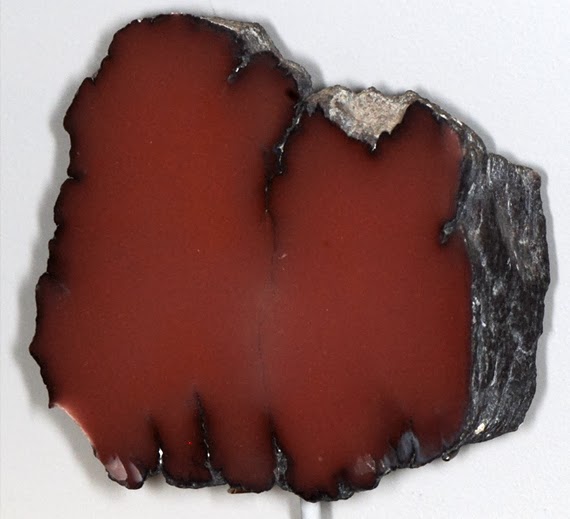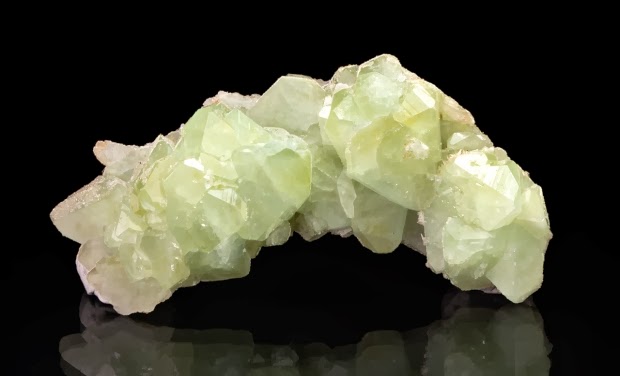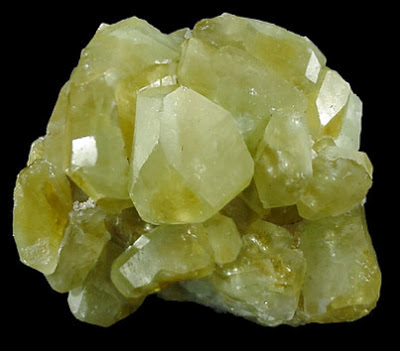
Chemical Formula: Ca(HBSiO5)
Locality: Diabases of the Connecticut River valley, USA.
Name Origin: From the Greek, dateisthai, meaning “to divide,” because granular aggregates crumble readily.
Datolite is a calcium boron hydroxide nesosilicate, Ca(HBSiO5). It was first observed by Jens Esmark in 1806, and named by him from δατεῖσθαι, “to divide,” and λίθος, “stone,” in allusion to the granular structure of the massive mineral.
Datolite crystallizes in the monoclinic system forming prismatic crystals and nodular masses. The luster is vitreous and may be brown, yellow, light green or colorless. The Mohs hardness is 5.5 and the specific gravity is 2.8 – 3.0.
The type localities are in the diabases of the Connecticut River valley and Arendal, Aust-Agder, Norway. Associated minerals include prehnite, danburite, babingtonite, epidote, native copper, calcite, quartz and zeolites. It is common in the copper deposits of the Lake Superior region of Michigan. It occurs as a secondary mineral in mafic igneous rocks often filling vesicles along with zeolites in basalt. Unlike most localities throughout the world, the occurrence of datolite in the Lake Superior region is usually fine grained in texture and possesses colored banding. Much of the coloration is due to the inclusion of copper or associated minerals in progressive stages of hydrothermal precipitation.
Botryolite is a botryoidal form of datolite.
Physical Properties of Datolite
Cleavage: None
Color: Brown, Colorless, Yellow, White, Light green.
Density: 2.8 – 3, Average = 2.9
Diaphaneity: Transparent to translucent
Fracture: Brittle – Generally displayed by glasses and most non-metallic minerals.
Hardness: 5.5 – Knife Blade
Luminescence: Non-fluorescent.
Luster: Vitreous (Glassy)
Streak: white
Photos:
